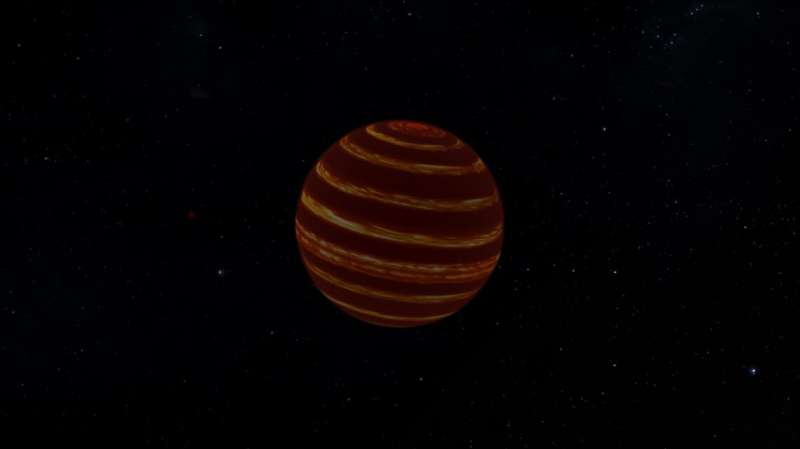A University of Arizona-led research team has found bands and stripes on the brown dwarf closest to Earth, hinting at the processes churning the brown dwarf's atmosphere from within.
Brown dwarfs are mysterious celestial objects that are not quite stars and not quite planets. They are about the size of Jupiter but typically dozens of times more massive.
Still, they are less massive than the smallest stars, so their cores do not have enough pressure to fuse atoms the way stars do. They are hot when they form and gradually cool, glowing faintly and dimming slowly throughout their lives, making them hard to find.
No telescope can clearly see the atmospheres of these objects.
Continued...
Source
Brown dwarfs are mysterious celestial objects that are not quite stars and not quite planets. They are about the size of Jupiter but typically dozens of times more massive.
Still, they are less massive than the smallest stars, so their cores do not have enough pressure to fuse atoms the way stars do. They are hot when they form and gradually cool, glowing faintly and dimming slowly throughout their lives, making them hard to find.
No telescope can clearly see the atmospheres of these objects.
Continued...
Source






















